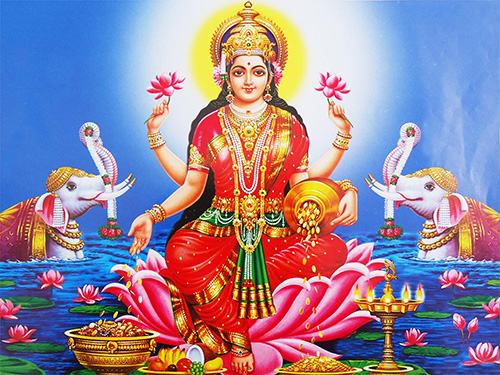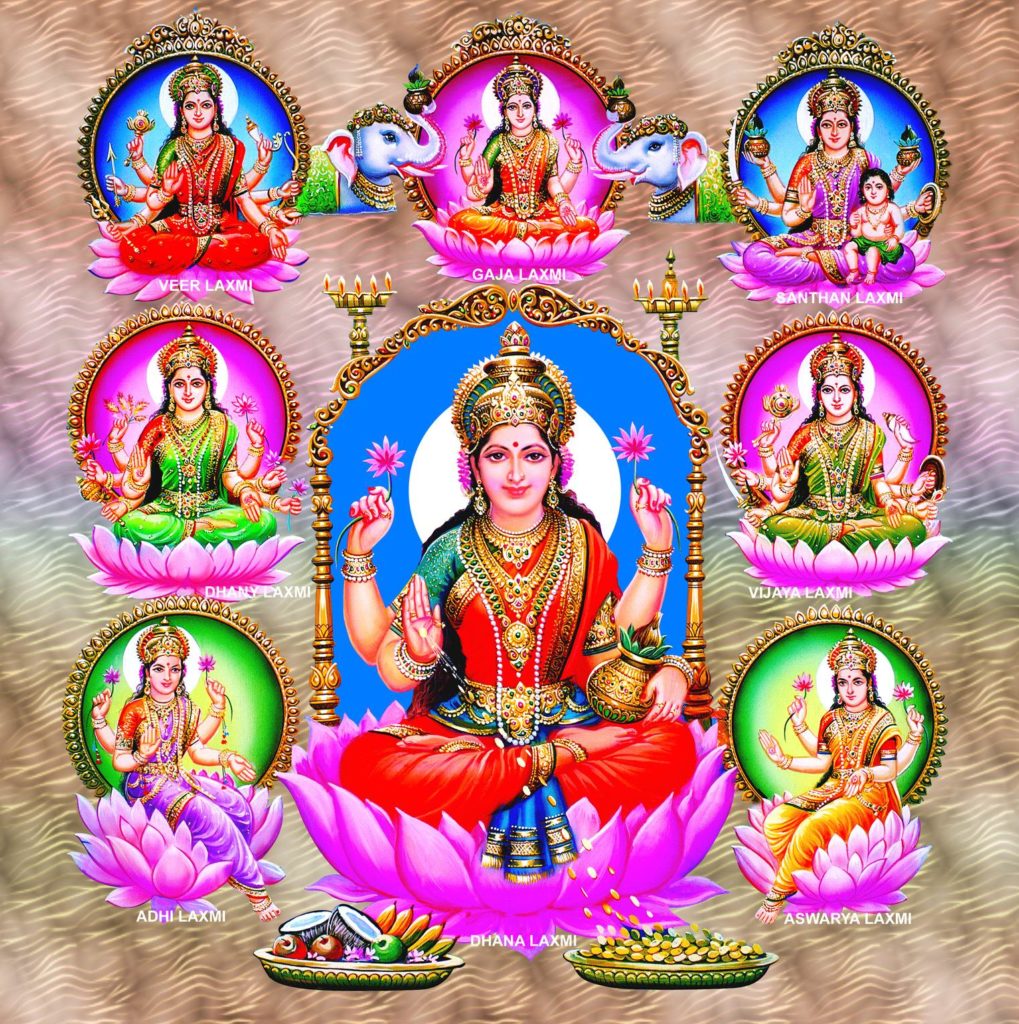Goddess Lakshmi Goddess Lakshmi is worshipped in eight different forms. The group of these eight forms of Goddess Lakshmi is called Ashta Lakshmi. The eight divine forms are: Adi-Lakshmi: The primeval Goddess Dhana-Lakshmi: The Goddess of prosperity and wealth Dhanya-Lakshmi: The Goddess of Foodgrains Gaja-Lakshmi: The goddess of strength, power and royalty Santana-Lakshmi: The Goddess Read More
Tag: Gaja Lakshmi
Ashta Lakshmi – 8 Kinds of Wealth
Ashta Lakshmi / Ashtalakshmi Among all the female deities in the Vedic and Puranic traditions, the source of brilliance, splendour and beauty can be seen in everything in the world because of the grace of the only Goddess i.e. Lakshmi. Lakshmi is praised by many names such as Sri, Ramaa, Vishnupatni, Kshirasagara Putri, Kamala, Padma, Read More


